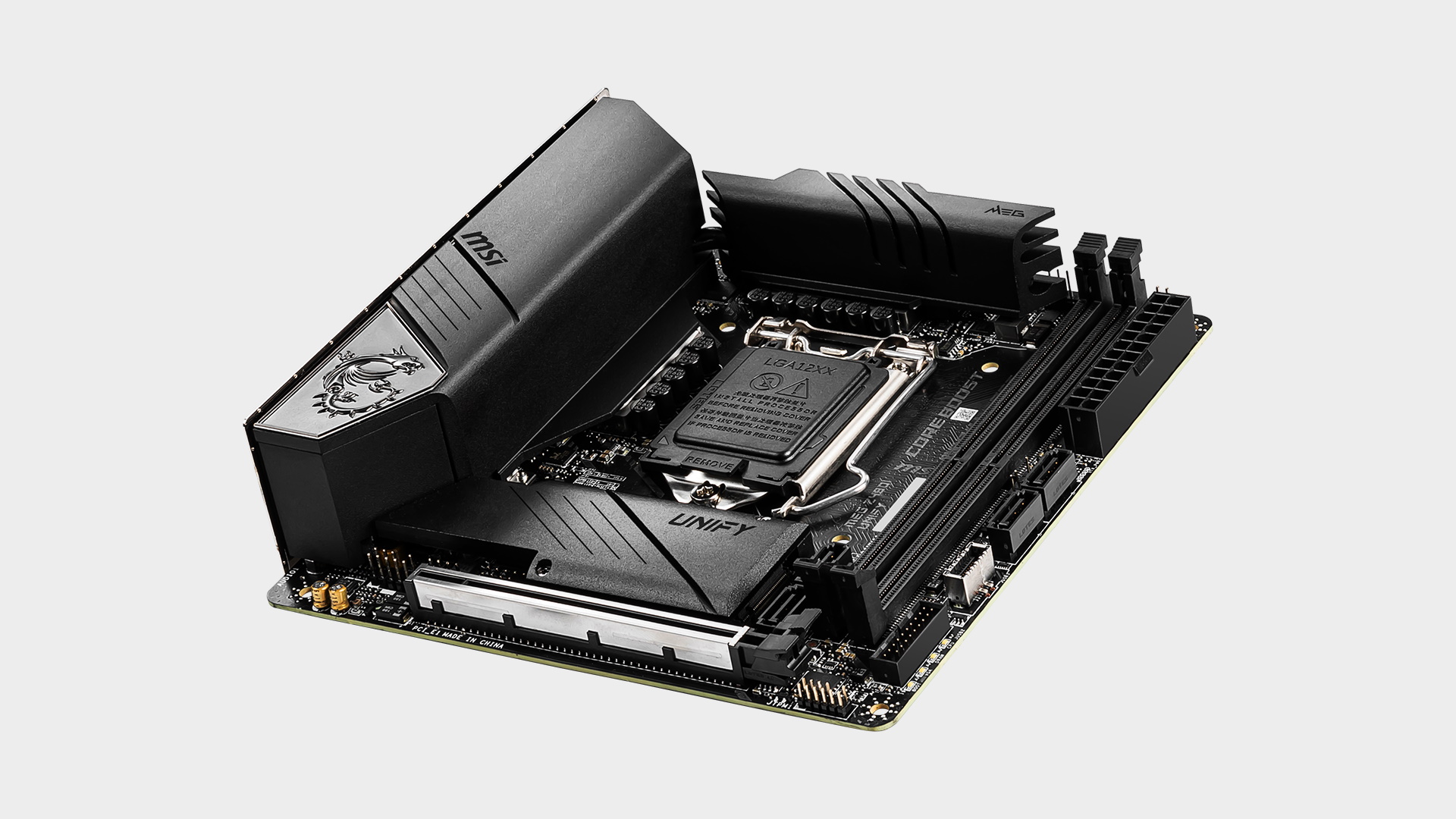Our Verdict
Any Mini-ITX motherboard comes with compromises. But with the MEG Z490i Unify, MSI has kept those to a minimum with some smart choices and clever configurations.
For
- Great build quality
- Clever configuration
- Good performance
Against
- Not the last word in overclocking
- Inevitable expansion limitations
PC Gamer's got your back
The MSI MEG Z490i Unify is a tiny Mini-ITX motherboard. And in case you didn't know, basing a new PC build on a Mini-ITX board comes with some fairly obvious compromises. A single 16-lane PCI-E port is a given for instance. You’d better not bank on lots of storage connectivity or multiple M.2 slots. Two memory DIMMs is your lot. You get the idea.
You don’t normally need to worry too much about is performance. OK, a high-end full ATX motherboard will always be the best choice for the absolute ultimate in overclocking. Those extremes aside, the actual computing experience from a Mini-ITX solution will typically be indistinguishable from a bigger board in subjective terms.
However, with the new MSI MEG Z490i Unify could there be reason to doubt that assumption? Just possibly, but not because we think MSI has dropped the ball with the MEG Z490i. Instead, our immediate concerns relate to Intel’s ancient 14nm process technology. It’s being stretched to near breaking point and 10 cores in its latest 10th Generation iteration.
With that in mind, we slotted in Intel’s latest and greatest CPU for the LGA1200 socket, the Core i9 10900K, all 10 cores and a claimed 5.3GHz of it, albeit that peak frequency is the Turbo boost for a couple of cores, not what it’s configured to run at as standard across all 10 cores.
Chipset - Intel Z490
Socket - LGA 1200
CPU Compatibility - Intel 10th Gen
Memory support - 2x DIMM, up to 64GB, up to DDR4-5000
Form factor - Mini-ITX
Expansion slots - 1x PCIe 3.0 x16, 1x PCIe 3.0 x4
Storage - 1x M.2, 4x SATA
Networking - Intel Wi-Fi 6, Realtek 2.5Gb LAN
USB - Rear - 1x USB 3.2 Gen 2 Type-C, 1x USB 3.2 Gen 2 Type-A, 2x USB 3.2 Gen 1 Type-A, 2x USB 2.0 | Front - 1x USB 3.2 Gen 2 Type-C, 2x USB 3.2 Gen 1 Type-A, 2x USB 2.0
Price - $240 (£254)
Whatever, first a quick precis of the MSI MEG Z490i Unify’s vital stats before we dive into some performance analysis. Initial impressions are solid, literally. This is a really tough, dense feeling little board with a serious lump of aluminium cooling the VRMs and an even heftier item acting as a rear I/O heat shroud, the latter being connected to the former with a heat pipe.
MSI has also engineered a novel and equally chunky heat sink for the sole M.2 slot which screws down onto the SSD and fully encloses it in lush-feeling aluminium. Nice. There’s more good news in the form of the nine-phase power supply. Features wise, the back panel is pretty comprehensive, including USB-C, HDMI, and DisplayPort. Those interfaces make a lot of sense on a board explicitly designed for small form factor cases.
It’s likewise nice to see a USB-C header on the motherboard, enabling the full exploitation of cases with USB-C ports. That includes Thunderbolt 3 via an Intel JHL7540 chip. Impressive. OK, there’s no debug display, and you only get four SATA ports, one of which you lose if you populate the M.2 slot. But heck, you even get Wi-Fi 6 and 2.5Gb ethernet thrown in, a three-strong array of fan headers and DDR4 memory support up to 5,000MHz, albeit for just two DIMMs. From a pure ergonomics point of view, it’s also good to note that the M.2 slot is accessible even with a graphics card installed.
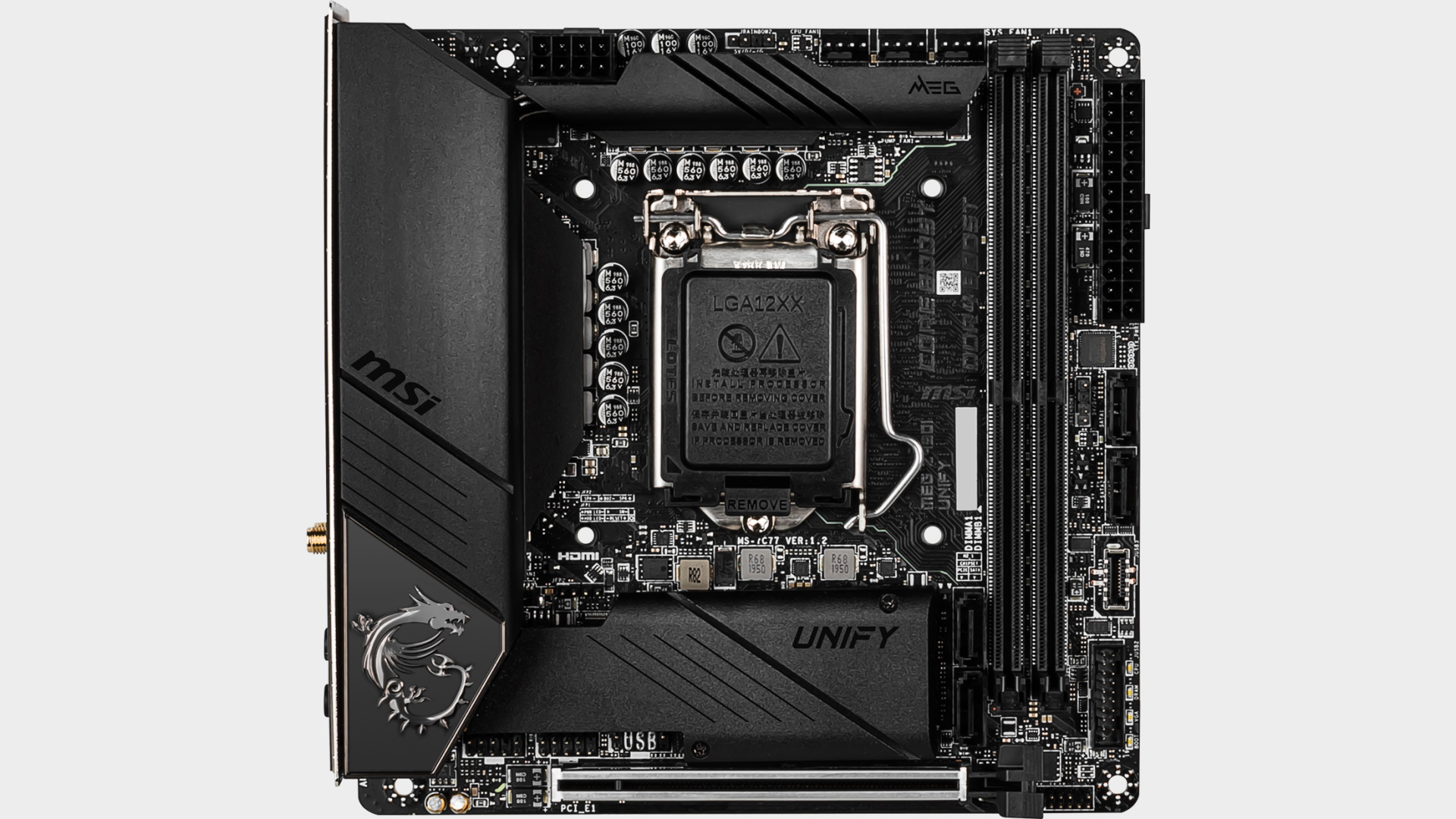
If there is a limitation, it involves the power supply for the CPU. There’s only an eight-pin supplementary power connector for the processor, rather than eight-plus-four pin. We’ve seen the Core i9 10900K sucking well over 300 watts when overclocked, suffice to say power supply is a sensitive subject for 10th Gen Intel chips. But all told, we like the choices MSI has made given the extreme constraints of the Mini-ITX form factor. While some things inevitably have to give, this board is cleverly configured to minimise the pain.
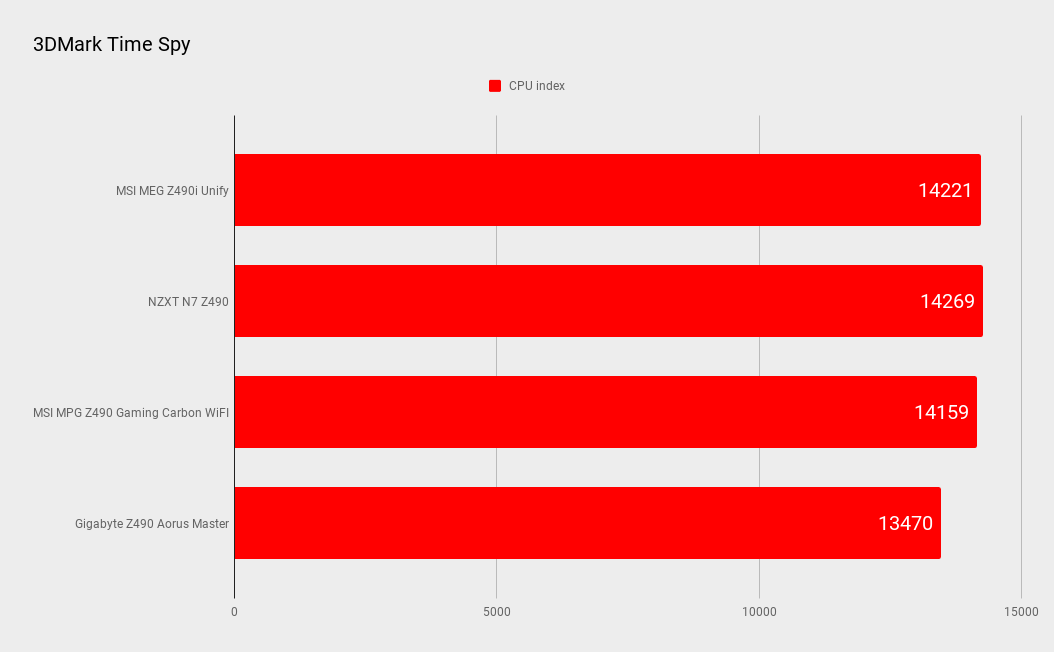
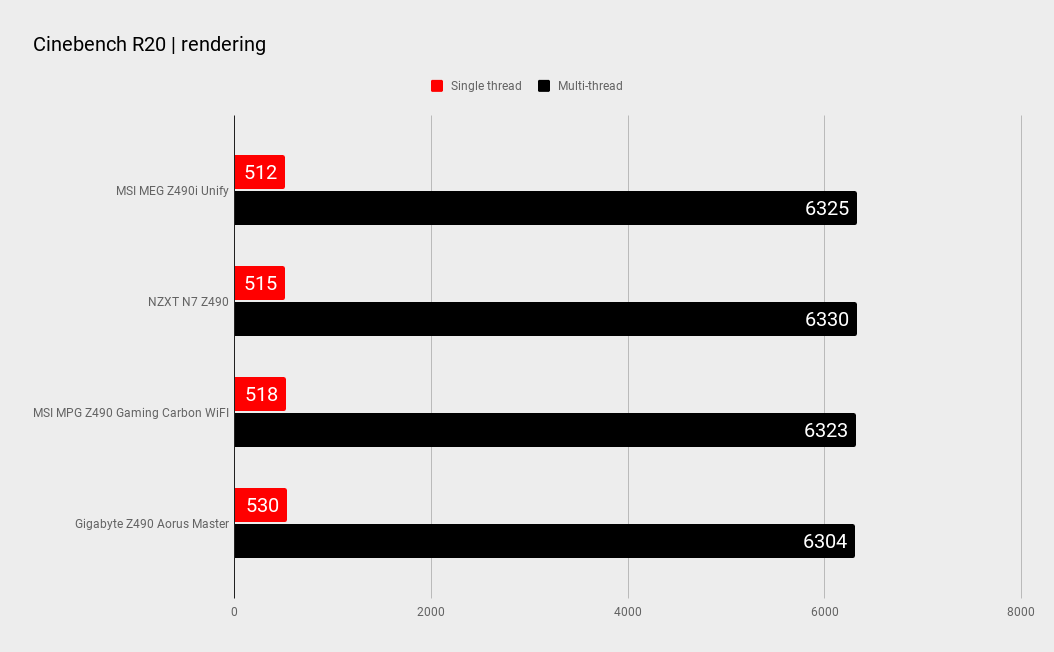
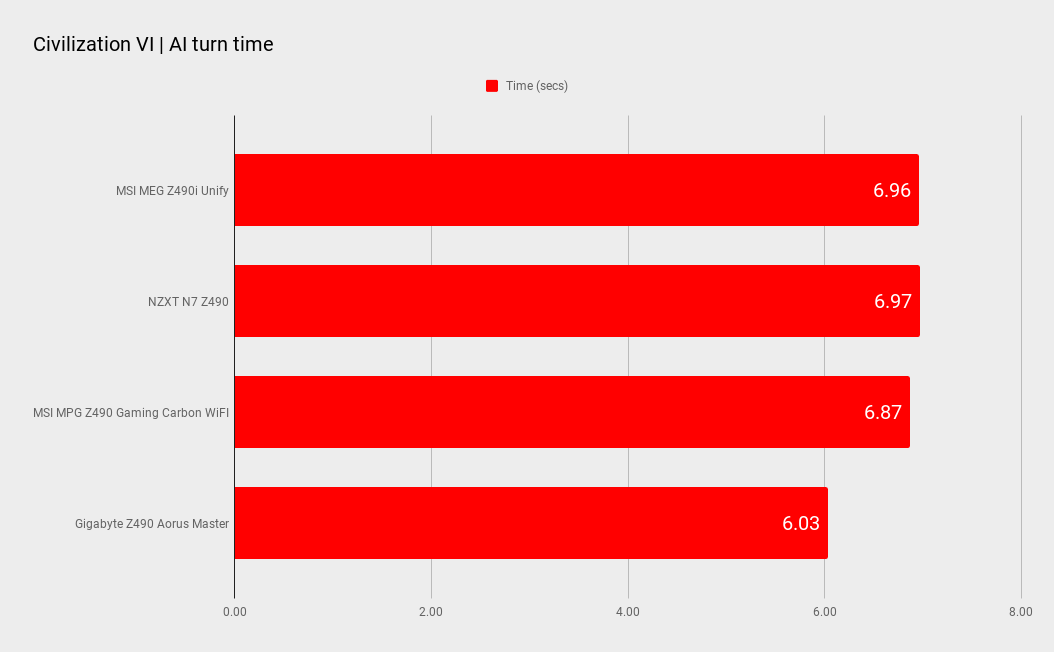
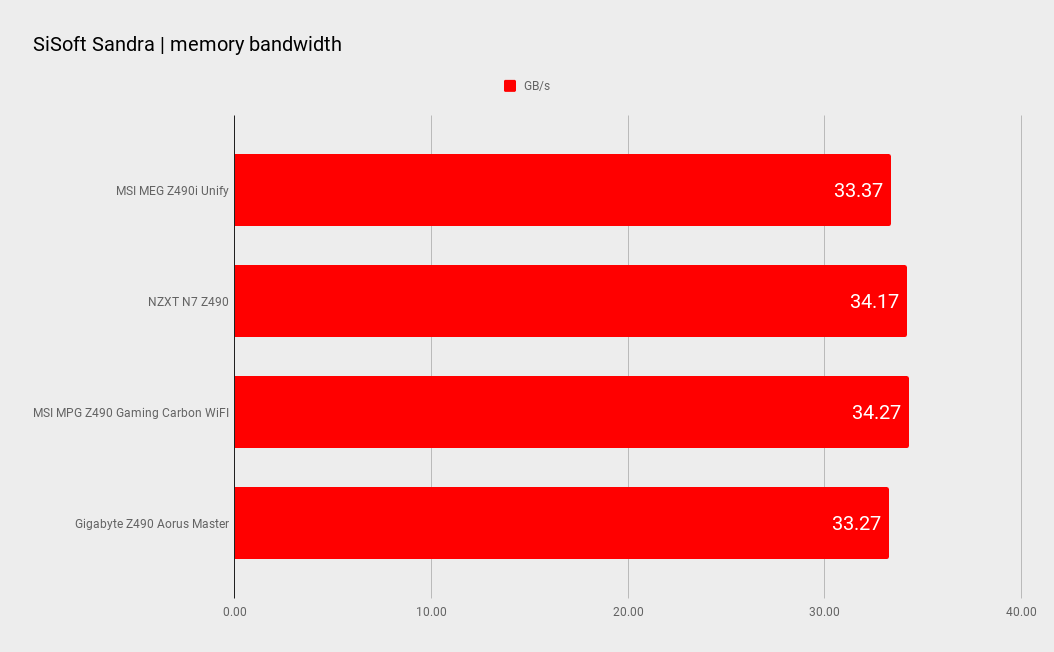
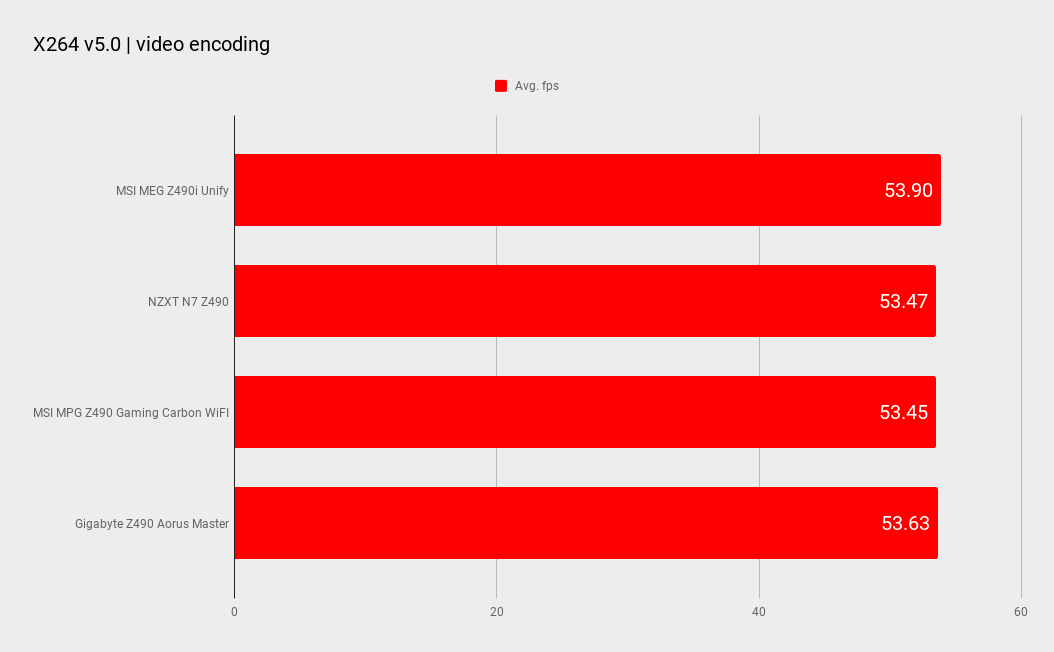
CPU - Intel Core i9 10900K
Cooler - Corsair iCue H100i Elite Capellix
Memory - 32GB Corsair Vengeance RGB Pro @3,200MHz
GPU - Nvidia GTX 1070
Storage - 1TB Addlink S90
PSU - NZXT C850
It’s also a decent performer. For the most part, there’s virtually nothing in it at stock clocks compared to a full ATX board like the NZXT N7 Z490. It’s pretty much a dead heat for multi-threaded rendering loads like Cinebench, for instance, and the 3D Mark CPU score is near identical.
The one obvious exception is gaming. Whether it’s Metro: Exodus, Far Cry: New Dawn or Civilisation VI, the MSI MEG Z490i Unify is just a tiny bit off the pace. Is it enough to actually feel in game? Probably not. But it perhaps hints at limitations in terms of power supply when you have both a powerful CPU and GPU under heavy load.
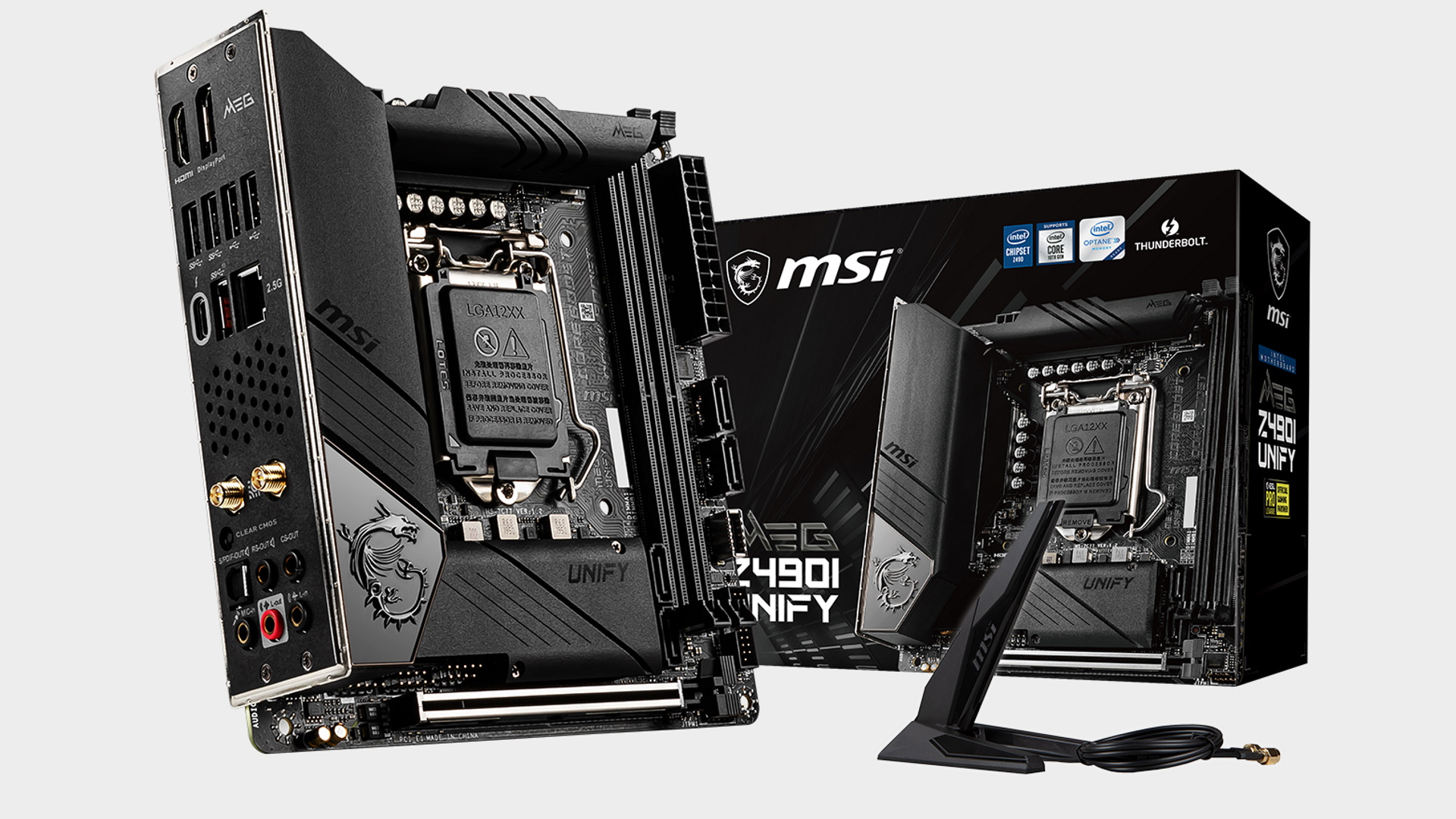
As for overclocking, the MEG Z490i booted and ran a pass or two of Cinebench R20 at 5.3GHz, but eventually exhibited some instability. 5.2GHz on all cores was eventually the maximum, which really isn’t at all shabby and within 100MHz of what you might normally expect from a 10900K CPU in a full sized ATX board.
The bottom line, then, is that this is a fine little motherboard that does a very good job of managing the inherent limitations of MIni-ITX. If you want something that will support zillions of HDDs, this isn’t your weapon of choice. But as the basis of a puny but very powerful PC, the MSI MEG Z490i Unify should be on your shortlist.
Any Mini-ITX motherboard comes with compromises. But with the MEG Z490i Unify, MSI has kept those to a minimum with some smart choices and clever configurations.

Jeremy has been writing about technology and PCs since the 90nm Netburst era (Google it!) and enjoys nothing more than a serious dissertation on the finer points of monitor input lag and overshoot followed by a forensic examination of advanced lithography. Or maybe he just likes machines that go “ping!” He also has a thing for tennis and cars.
